How to Handle Roofing Leaks: Immediate Steps and Long-Term Solutions
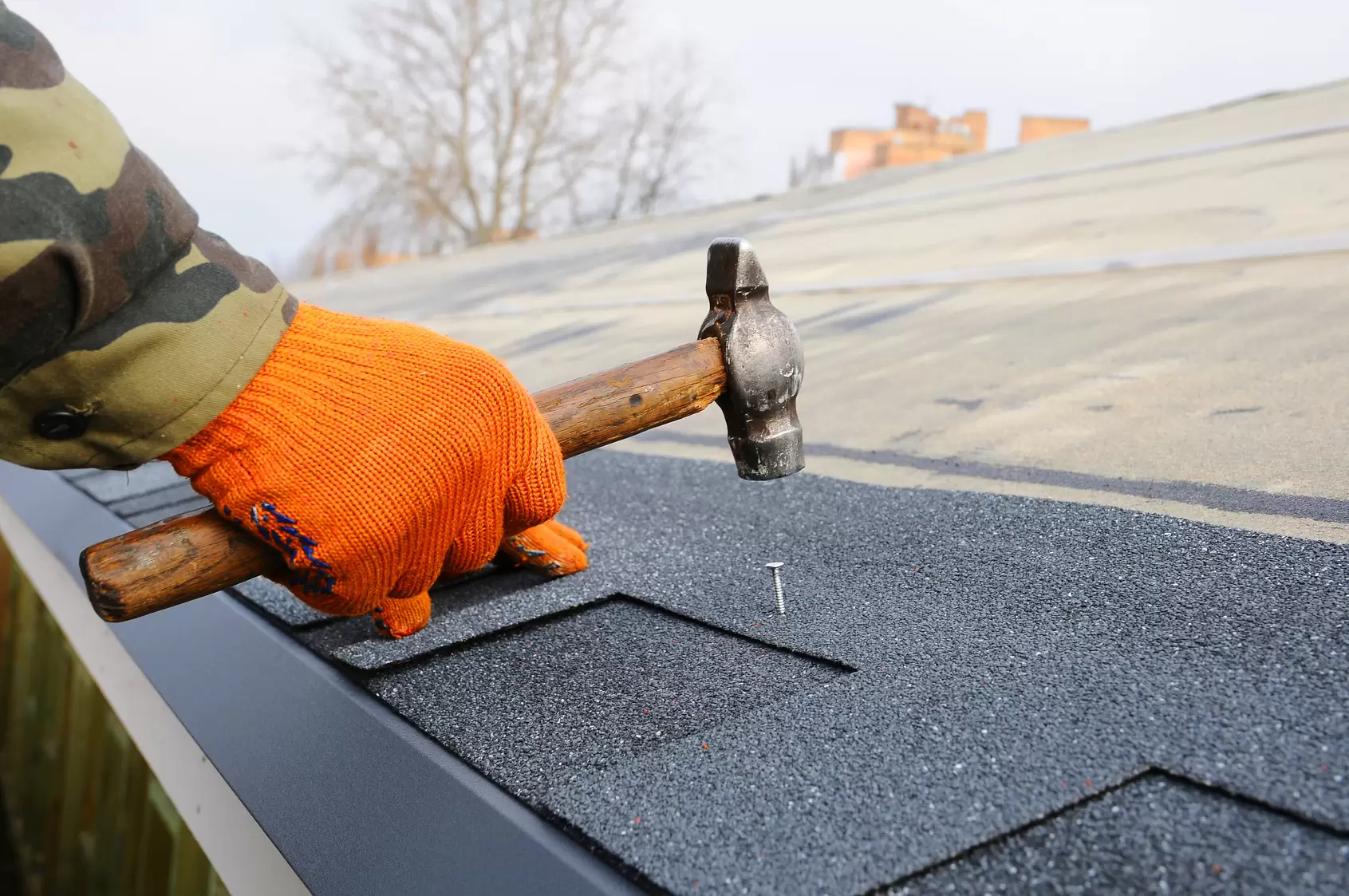
A leaking roof can quickly turn from a minor inconvenience into a significant problem if not addressed properly. Water damage can weaken structural components, promote mold growth, and lead to expensive repairs. Whether you’re dealing with a small drip or a major leak, understanding how to handle the situation effectively is crucial. Taking the right immediate steps can prevent further damage, while long-term solutions will help ensure your roof remains in good condition for years to come.
Identifying the Source of the Leak
 The first step in dealing with a roof leak is finding out where the water is coming from. This can be tricky because water often travels before it becomes visible inside the house. Common signs of a leak include water stains on the ceiling, damp walls, and musty odors. Checking the attic during or after a rainstorm can help pinpoint the source. Look for wet insulation, water trails, or mold growth, which can indicate where the leak is originating. If the source is not immediately apparent, examining the roof from the outside for missing shingles, cracked flashing, or clogged gutters may provide some clues. read the full info here to understand how to locate and address roof leaks effectively.
The first step in dealing with a roof leak is finding out where the water is coming from. This can be tricky because water often travels before it becomes visible inside the house. Common signs of a leak include water stains on the ceiling, damp walls, and musty odors. Checking the attic during or after a rainstorm can help pinpoint the source. Look for wet insulation, water trails, or mold growth, which can indicate where the leak is originating. If the source is not immediately apparent, examining the roof from the outside for missing shingles, cracked flashing, or clogged gutters may provide some clues. read the full info here to understand how to locate and address roof leaks effectively.
Minimizing Interior Damage
Once a leak has been detected, taking immediate action to limit interior damage is essential. Placing a bucket or container under the drip will help prevent water from spreading to floors and furniture. If water is pooling in the ceiling, using a screwdriver to create a small drainage hole can help release the pressure and minimize structural damage. Drying out wet areas as soon as possible will also reduce the risk of mold development. Using fans, dehumidifiers, and towels can assist in absorbing excess moisture and preventing further complications.
Temporary Fixes to Stop the Leak
While a professional repair may be necessary, there are temporary measures that can help control the leak until proper repairs can be made. Roofing tar, waterproof tape, or plastic sheeting can provide a short-term solution to cover exposed areas and keep water out. If the leak is caused by missing shingles, securing a tarp over the affected section of the roof can help prevent further damage. However, these fixes should only be used as a temporary measure, and a permanent solution should be sought as soon as possible.
Addressing the Underlying Issue
Finding and fixing the root cause of the leak is the only way to ensure it does not return. Roof leaks can result from various issues, including damaged shingles, worn-out flashing, deteriorating seals around vents, or improper installation. In some cases, clogged gutters may also contribute to leaks by causing water to back up onto the roof. Inspecting and maintaining these components regularly can help prevent leaks from occurring in the first place.
When to Call a Professional
While some minor leaks may be manageable with DIY repairs, there are times when professional help is necessary. If the leak is extensive, recurring, or involves structural damage, a roofing specialist should be consulted. Professional roofers have the experience and tools needed to properly assess the situation and make lasting repairs. In cases where the roof is old or significantly damaged, a full roof replacement may be the best course of action to prevent future leaks and improve the home’s overall protection.
Preventative Maintenance for Long-Term Protection
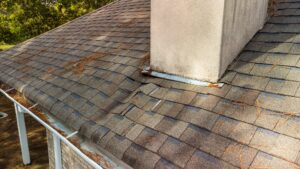 Regular roof maintenance is key to preventing leaks before they start. Scheduling annual inspections, cleaning gutters, and trimming overhanging branches can help keep the roof in good shape. Checking for loose or missing shingles after storms and making necessary repairs promptly will also reduce the likelihood of future leaks. Applying sealants around vents, chimneys, and skylights can further enhance the roof’s ability to withstand harsh weather conditions. Investing in high-quality roofing materials during installation or replacement can provide added durability and longevity.
Regular roof maintenance is key to preventing leaks before they start. Scheduling annual inspections, cleaning gutters, and trimming overhanging branches can help keep the roof in good shape. Checking for loose or missing shingles after storms and making necessary repairs promptly will also reduce the likelihood of future leaks. Applying sealants around vents, chimneys, and skylights can further enhance the roof’s ability to withstand harsh weather conditions. Investing in high-quality roofing materials during installation or replacement can provide added durability and longevity.
The Importance of Roof Inspections
Routine roof inspections can help identify potential problems before they turn into major leaks. Professional inspections can reveal hidden issues such as small cracks, weak spots, or early signs of water damage that might go unnoticed. Catching these problems early can save homeowners significant money on costly repairs down the road. Homeowners should also conduct their own inspections periodically, especially after severe weather events.
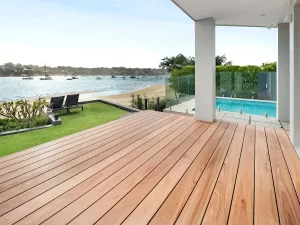 Traditional decking materials, such as pressure-treated wood and composite boards with harmful chemicals, can have a negative impact on the environment. They often require deforestation, excessive water use in production, and can release toxins into the soil over time. Eco-friendly decking options address these concerns by utilizing renewable resources, recycled materials, and non-toxic finishes. By choosing sustainable decking, homeowners can contribute to a healthier planet while enjoying a long-lasting and aesthetically pleasing outdoor space.
Traditional decking materials, such as pressure-treated wood and composite boards with harmful chemicals, can have a negative impact on the environment. They often require deforestation, excessive water use in production, and can release toxins into the soil over time. Eco-friendly decking options address these concerns by utilizing renewable resources, recycled materials, and non-toxic finishes. By choosing sustainable decking, homeowners can contribute to a healthier planet while enjoying a long-lasting and aesthetically pleasing outdoor space.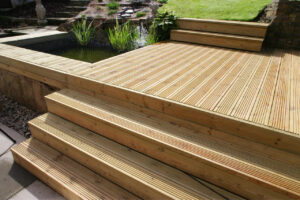 In addition to selecting sustainable decking materials, using non-toxic finishes and sealants is essential for maintaining an eco-friendly outdoor space. Many traditional stains and sealers contain volatile organic compounds (VOCs) that can be harmful to both the environment and human health. Opting for water-based, low-VOC, or plant-based finishes ensures a safer and more sustainable decking solution. These products help protect the deck from moisture and UV damage without releasing harmful chemicals into the air or soil.
In addition to selecting sustainable decking materials, using non-toxic finishes and sealants is essential for maintaining an eco-friendly outdoor space. Many traditional stains and sealers contain volatile organic compounds (VOCs) that can be harmful to both the environment and human health. Opting for water-based, low-VOC, or plant-based finishes ensures a safer and more sustainable decking solution. These products help protect the deck from moisture and UV damage without releasing harmful chemicals into the air or soil. Before selecting a decking material, consider your lifestyle, maintenance preferences, and the climate in your area. If you live in a region with harsh winters or intense heat, some materials may be more resistant to weathering than others. Think about how often you’ll use the deck, whether you prefer a natural or modern look, and how much maintenance you’re willing to commit to over time.
Before selecting a decking material, consider your lifestyle, maintenance preferences, and the climate in your area. If you live in a region with harsh winters or intense heat, some materials may be more resistant to weathering than others. Think about how often you’ll use the deck, whether you prefer a natural or modern look, and how much maintenance you’re willing to commit to over time.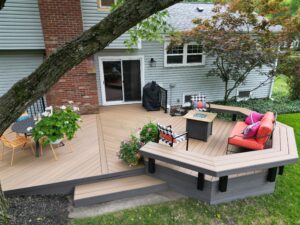 Another option for those looking for a virtually maintenance-free deck is PVC or vinyl decking. These synthetic materials are highly resistant to moisture, mold, and insects, making them ideal for areas with high humidity or frequent rain. Unlike wood or composite, PVC decking does not absorb water, which helps prevent issues like rot or mildew growth.
Another option for those looking for a virtually maintenance-free deck is PVC or vinyl decking. These synthetic materials are highly resistant to moisture, mold, and insects, making them ideal for areas with high humidity or frequent rain. Unlike wood or composite, PVC decking does not absorb water, which helps prevent issues like rot or mildew growth.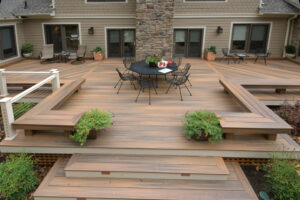 Bamboo decking has gained popularity as an environmentally friendly alternative to traditional wood. As a rapidly renewable resource, bamboo offers a sustainable option for homeowners looking to reduce their environmental footprint. It is naturally resistant to moisture and pests, making it a durable choice for outdoor spaces.
Bamboo decking has gained popularity as an environmentally friendly alternative to traditional wood. As a rapidly renewable resource, bamboo offers a sustainable option for homeowners looking to reduce their environmental footprint. It is naturally resistant to moisture and pests, making it a durable choice for outdoor spaces.